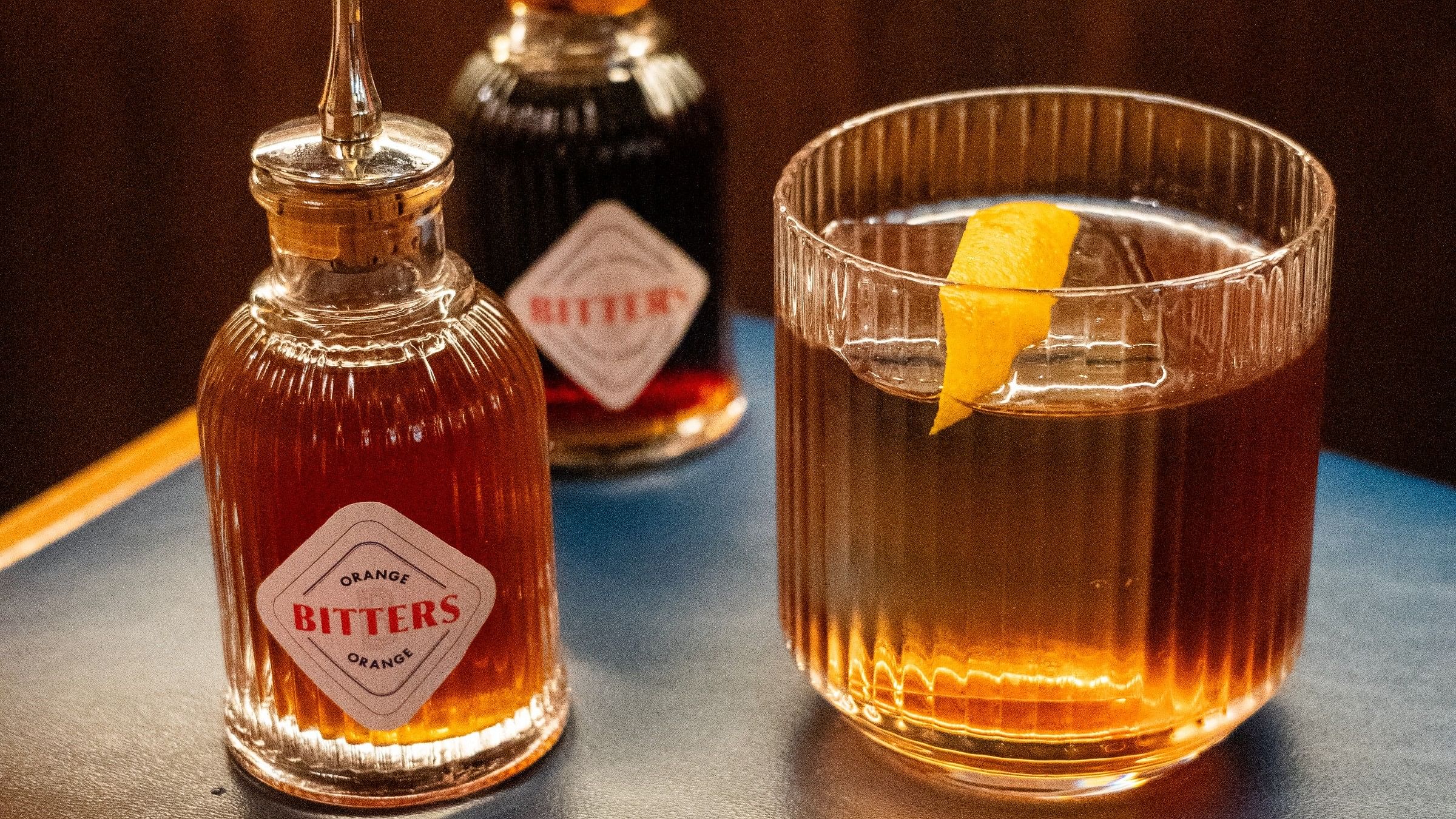
The Old Fashioned at The Bombay Canteen is made with in-house bitters.
PIC COURTESY THE BOMBAY CANTEEN
All that bitters is gold! Or so it seems in the Indian cocktail scene today. The last decade has seen the growing popularity of bitters — usually and preferably an alcoholic ingredient that has been around for centuries — primarily used in Western cultures for their medicinal properties and later in cocktails.
Bitters were earlier only used in high-end hotels. This is where Yangdup Lama, 51, mixologist and co-owner of Sidecar, and Cocktails & Speakeasy in Delhi-NCR, got his first taste of a drink with bitters...at a five-star hotel in Delhi, where he was working in 1995 when he was 22. They were consumed with lime soda or ginger ale because it was a great way to keep the tummy safe, he recalls. But what struck a chord was that the bitters were so flavourful that just a drop or two could do magic. “Bitters have been my favourite because it does two things: Keep the sweet component away and give a punch of flavour,” he says.
“Bitters made their way to India through the influence of British colonial rule, where they were used in drinks like the classic Gin & Tonic to combat malaria,” confirms Ravish Bhavnani, 38, co-founder of Fig & Maple, New Delhi, who’s been in the industry for 18 years. Mixologist Nitin Tewari recalls this flavoured concentrated form of alcohol becoming popular among bartenders to enhance cocktails when the Old Fashioned cocktail became popular. Everyone wanted the drink on their menu..a drink incomplete without bitters. Today, people often ask for their Gin & Tonic with bitters or request soda with bitters on the side during lunch. “Whereas using liquor makes the drink too sweet, fresh fruits make it too cloudy,” he says.
What’s your favourite bitter?
There are two types of bitters: those which are concentrates like The Bitter Truth or Fee Bitters that come in 100ml bottles. A drop or two (max 5ml) is used for flavouring cocktails or foods as it’s quite concentrated. And bitter aperitifs like Campari and Aperol, which are milder and can be a drink in itself. Aperol Spritz is a common combination with sparkling wine. Or, just mix it with orange juice, or soda depending on how much you can handle the bitter flavour. If you can, try it on the rocks.
Negronis are popular today, and use gin, sweet vermouth, and bitters (Campari) in a ratio of 1:1. Take an Americano, and add sweet vermouth and Campari in the ratio 1:1. “This has a sweet and bitter taste, with the latter ruling. A splash of good bitter aromatic or flavoured like the chocolate ones or those with a flowery or herb tone works well in a Gin & Tonic. You can also use bitters in whisky soda,” says Lama, whose bars and brand make their flowery bitters with rose and jasmine, spicy ones, ginger bitters, chocolate bitters, and gulkand bitters.
DIY bitters
Even today, bitters aren’t easily available in India and you can’t have something on the menu whose availability is uncertain. So, while the likes of Tewari collect bitters during their travels, others have tried making their own versions.
Like Bhavnani, an Air Force kid who got his first taste when he stole a sip from his parents’ lemon/lime and bitters drink, at the age of eight. His time in Australia exposed him to a wide range of bitters.
“The flavour profile was so complex: a little bit of citrus, some earthy notes, and this surprising hint of spice that just elevated the whole drink,” says Bhavnani, who was hooked. Today. Fig and Maple make their own range: Nannari Bitters, infused with the earthy sweetness of Indian sarsaparilla, Palash Bitters made from the vibrant flowers of the flame-of-the-forest tree, Phalsa Bitters which have a tangy-sweet flavour from phalsa, Kokum Bitters which has the sour and slightly fruity taste, Ambade Bitters made from the tart ambade fruit and bring a punch of sourness.
What works best for Prantik Haldar, beverage innovations head at The Bombay Canteen, is that bitters enhance other flavours rather than imparting their own.
Haldar first came across bitters in 2008 at a supermarket in Chandigarh. He only tasted it in 2014 during his hotel management college days. “Celery bitters can be used to make an Old Fashioned more savoury or give a Bloody Mary an extra punch,” he adds. The Bombay Canteen started making their own bitters out of necessity. They’ve made aromatic bitters to replace Angostura for their Old Fashioneds: They mix aromatic, chocolate, and chilli bitters along with mezcal and honey for their Oaxacan-style Old Fashioned. They have made orange bitters for a less bitter, more citrusy note; celery bitters, as well as chilli bitters. “We realised it’s about creating a base flavour profile — bitter or floral — and then building it up with the desired flavours,” he says. The Dark Monsoon at The Bombay Canteen has dark rum, honey, ginger, ginger ale, and aromatic bitters.
During the pandemic, Tewari made bitters at home. He took a base spirit (rum or gin) and added a masala teabag to it. He then added sugar to balance it out and left it for 2-3 days to get a dark-infused liquid. “The tea has tannins which gives it a dry mouthfeel and bitterness while the masala adds spice,” explains Tewari.
But bittering agents can get tricky. Something like karela won’t work because it’s very strong and has a veggie flavour too. Roasted coffee beans, cacao bark and teabags work if you infuse them for a long time. “It should be used in a dried form because that’s when it tends to lend a stronger flavour. Add ginger or spices to infuse the flavour. In Delhi, neem is readily available, so we use that to make some bitters at Sidecar. Or even orange peel pith,” adds Lama.